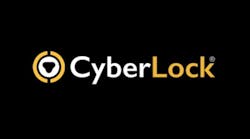International travel ain’t what it used to be. No more do we leave security to mere paper, ink, stamps, a shrewd eye and a certain amount of good faith. And why should we, when there are better tools at our disposal?
Senior Advisor for the International Affairs for Passport Services Michael Holly says that specs for the first biometric passport were hatched in 1998 and 1999, and the U.S. issued its first electronic passport in December 2005. Biometric passports or “ePassports” are combined paper and electronic passport that contain biometric ID. This very precise information will then quickly and accurately verify a traveler’s identification. Diplomats were first to carry the updated document, followed by state officials and finally tourists. This year the U.S. has joined more than 100 countries in issuing biometric passports exclusively.
Not surprisingly, the value of biometric passports to public safety hinges on good identification management. Public Key Infrastructure (PKI) protects all the data stored on the chip. Says Holly: “For the first time you can authenticate travel document in real time. You can be assured that the passport was issued by the proper issuing authority and the data on the chip has not been modified or changed. Coupled with the biometric, you know that the person who stands in front of you is, in fact, the true bearer of the passport and the passport is a valid and genuine travel document.”
The U.S. government uses the face as its primary biometric. But a number of countries, such as those in the EU, have determined to store fingerprint images on their passports in addition to the face. Because those countries are securing that fingerprint information only those countries can access the fingerprint—the U.S. would not be able to do so.
Holly says ePassports are great, but their [success] is really dependent on the identity management of the issuing authority.
A guy steps off of a plane…
Perhaps one of the biggest values of the electronic passport is its potential to save on resources. For example, Holly thinks ePassports can drastically reduce wait times and staffing issues at ports of entries and borders, in addition to providing added security.
“Instead of waiting 30, 40 minutes or even an hour or more to see an inspector, the traveler can place his passport in a kiosk, and during the process it would only take 10, 15 seconds or less,” says Holly. A machine within the kiosk reads the chip, takes a photo of the person or takes fingerprints and compares with the chip data and the digital signature. As this happens the PKI that protects the chip data is checked, the passport is authenticated and checked against INTERPOL—the initial law enforcement entity—and inspectors can see whether that document has been reported lost or stolen—all in one seamless motion.
“One inspector can oversee six kiosks, and then you have five inspectors free to do other things like pay attention to high-risk travelers,” says Holly. Automated border patrol systems sounds promising to those tasked with staffing and working these busy travel stations.
What about (cyber) security?
Holly says every issuing authority or country has its own cyber security activities to ensure no one hacks into their system. Because the chip is protected by PKI, authorities will be alerted should a travel document indicate manipulation.
He recommends law enforcement professional familiarize themselves with the security feature on travel documents. “If [you] actually want to read the chip, you can validate the travel document by comparing the chip data against the data page (the first page that features a picture and biographical data).”In this case, one is checking for completely [identical] information.
“Learn the passport, learn the features, use the feature,” says Holly. He adds they are in the process of redesigning the U.S. passport and are looking to reissue in 2016. New features to expect include additional photographs for enhanced comparison.


